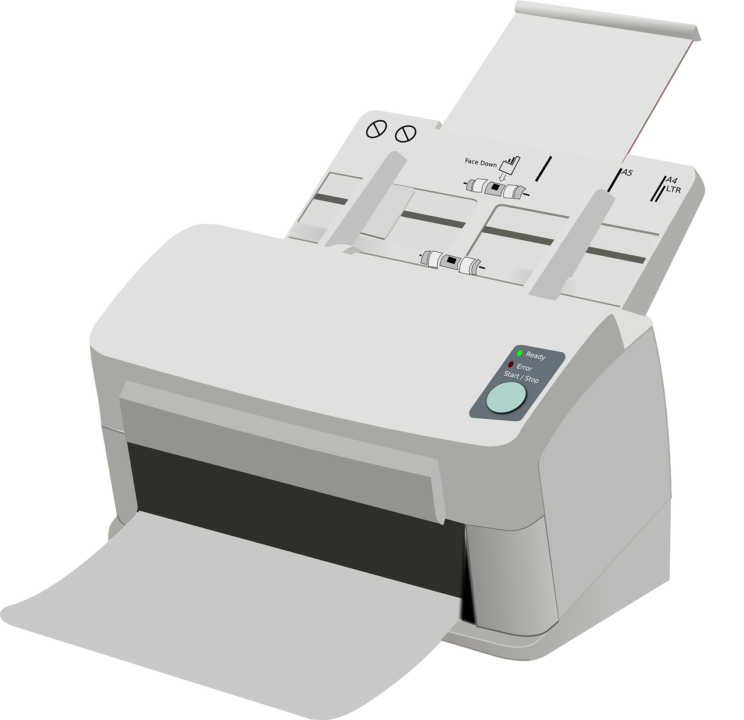Hello there, savvy readers! If you’ve ever marvelled at those neatly affixed labels on packages, products, or even medical wristbands, you’ve likely encountered the magic of thermal label printers. These unassuming devices have revolutionised how we label things, making tasks that were once tedious swift and stress-free.
Understanding Thermal Printing
So, what’s the secret behind thermal printing? It’s all about heat! Thermal label printers create images on special label paper using heat. There are two main types: direct thermal and thermal transfer.
The former uses heat-sensitive paper to create images when heat is applied directly to the paper. The latter, thermal transfer, employs a thermal ribbon that transfers ink onto the label when heated.
Each method has its unique perks, so it’s essential to choose the right one for your needs.
Components of a Thermal Label Printer
Let’s consider the nitty-gritty of these printers. They’re a bit like orchestras—several components harmonise to create the perfect label symphony. The star of the show is the print head, a tiny device that heats up and forms images or text on the label.
The platen, a roller, keeps the label paper in place during printing. In the case of a food label printer performing thermal transfer, the thermal ribbon plays a crucial role in transferring ink to the label. It’s like a well-choreographed dance that results in impeccable labels.
Advantages of Thermal Label Printers
Thermal label printers are known for their lightning-fast printing. They don’t dilly-dally like inkjet printers; instead, they produce labels swiftly and without the fuss of ink or toner cartridges.
This not only saves time but also slashes costs. Plus, the labels they produce are sturdy companions, withstanding various environments without fading or smudging.
Applications of Thermal Labels
Thermal printer labels have become indispensable across industries. Picture this: in retail, they effortlessly churn out price tags and product labels. In logistics, they generate shipping labels and barcodes for seamless tracking.
In healthcare, they’re the heroes behind patient wristbands and prescription labels. And don’t forget manufacturing; they’re responsible for inventory labels and quality control, ensuring products are top-notch.
Choosing the Right Thermal Printer
Now, let’s find your printer soulmate. Consider your needs: How many labels will you print daily? What sizes do you need? Connectivity matters, too—do you want Wi-Fi or USB options?
There’s a printer for everyone: compact desktop models for small-scale tasks, robust industrial ones for heavy-duty needs, and portable marvels for the on-the-go label aficionado.
Label Design and Customization
Are you getting creative? Modern thermal label printers play well with design software. You can personalize labels with text, images, barcodes, and even QR codes. Think of it as an artistic canvas that enhances your brand’s identity. Want vibrant colors? No problem. Need a barcode that scans like a dream? They’ve got your back.
Maintenance and Troubleshooting
Like any star performer, thermal printers need a bit of care. Regular cleaning of the print head and platen ensures consistent, high-quality prints. And if the show hits a snag—say, faded labels or paper jams—don’t panic. A quick troubleshooting session often solves these hiccups and gets your printer back in action.
Tips for Extending Printer Lifespan
Who doesn’t love a long-lasting relationship? To keep your food label printer smitten with you, establish a routine maintenance schedule. Regular servicing and cleaning can extend its lifespan significantly. Also, remember to use quality thermal labels and ribbons. It’s like giving your printer the VIP treatment it deserves.
Integration with Software Systems
Let’s talk about efficiency. Thermal label printers can shake hands with your inventory management or point-of-sale systems. This means less manual labor; labels can be printed automatically as part of your processes. It’s like having a personal assistant who always knows when to bring the labels to the party.
Environmental Considerations
While we’re all about labels, let’s not forget our planet. Thermal printing has a sustainability edge; no need for ink cartridges means less waste. However, there’s a catch: thermal paper.
It’s not as eco-friendly as we’d like. But fear not! Some recycling options are available to keep your label love affair green.
Future Trends in Thermal Printing
Buckle up for the future! The world of thermal printing is ever-evolving. Imagine even more advanced print head technology, creating sharper and more detailed labels. And get this: integration with the Internet of Things (IoT). This means real-time monitoring and management of your printing fleet – it’s like giving your printers a digital brain.
Frequently Asked Questions (FAQs)
Q: Are thermal labels waterproof?
A: Direct thermal labels are more sensitive to moisture, while thermal transfer labels tend to be more durable in wet conditions.
Q: Can I print coloured labels with a thermal printer?
A: While direct thermal printing is typically monochromatic, thermal transfer can produce colored labels by using the appropriate thermal ribbons.
Q: Are thermal printers suitable for high-volume printing?
A: Yes, industrial-grade thermal printers can handle high printing volumes efficiently.
In a Nutshell
In a world where labels speak volumes, thermal label printers have a language all their own. They’ve taken mundane labelling tasks and turned them into a breeze, offering speed, cost-effectiveness, and durability. So, whether you’re in retail, healthcare, logistics, or any other field, consider these as your trusted partner for your labelling needs.
Want to get your labels completed in the most premium manner? Give a quick call to DAL-Dial A Label. They offer label printing and printers, so you have the choice to get the best for your packages.




